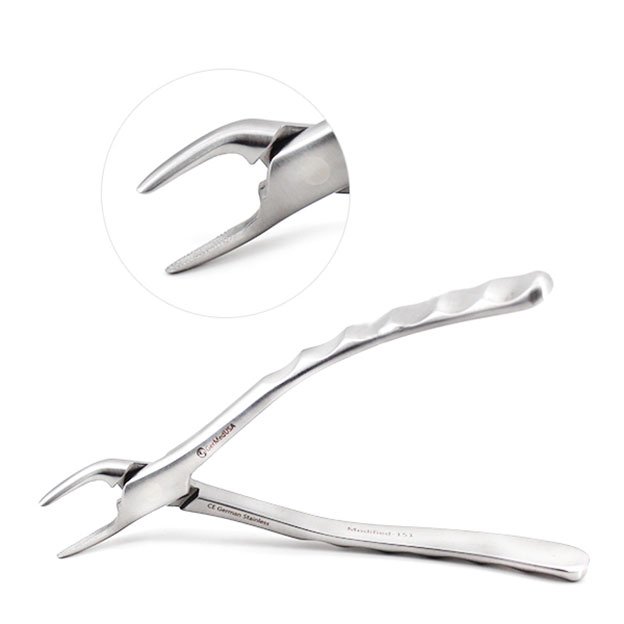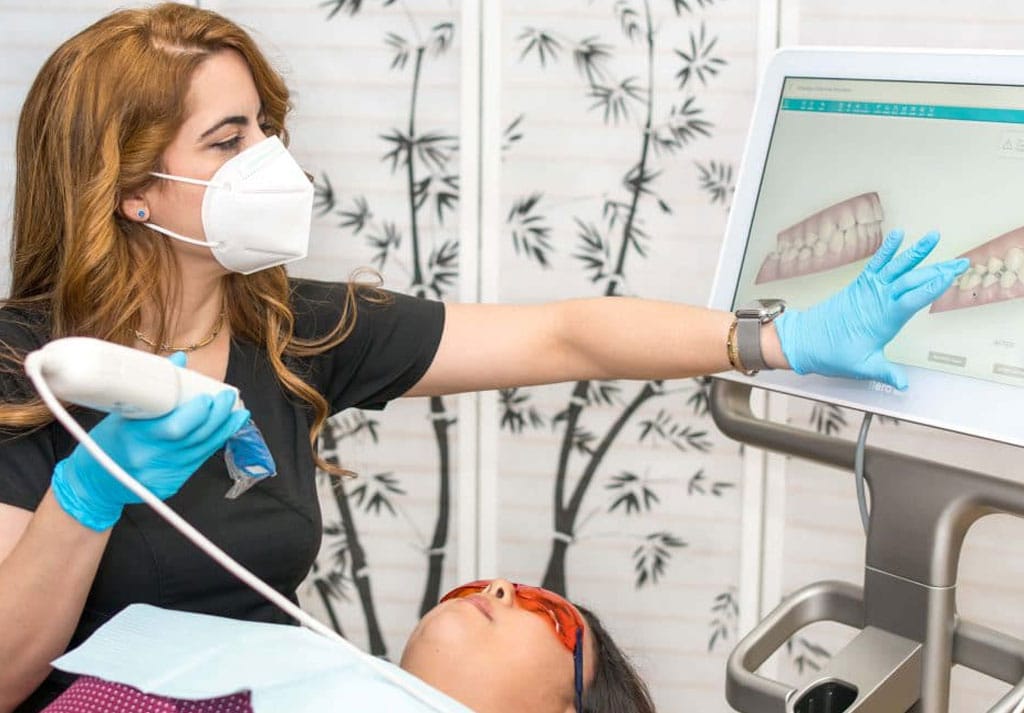Extraction procedures are performed when a tooth becomes terribly problematic. When teeth cannot be restored or remain inside the cavity any longer because they are compromising the patient’s overall oral and general health, they have to be taken out. Extraction procedures require a myriad of extraction and diagnostic instruments. Among these are the Dental extraction Forceps discussed in the article below.
Dental extraction Forceps are essential tools that grab the teeth to be extracted to deliver them out of the mouth. These instruments assist in teeth extractions in conjunction with dental elevators. There are multiple designs available for the extraction forceps. Every Forceps is carefully crafted keeping in mind its function and use inside the oral cavity. Instruments are also designed according to the needs of the operators for efficient surgical procedures the different types of forceps come into use for specific areas within the mouth. There are different forceps for extraction of anterior, posterior, maxillary, and mandibular teeth. Forceps for extraction of broken down roots and third molars are also available. Their beaks are designed to conform to the cervical space of the crown.
Instrument Components:
Beaks: This is the top part of the Dental extraction forceps. It conforms around the crown of the tooth. The Universal extraction forceps have a beak that will work around the crown of any teeth. Extractors for multirooted teeth have a beak form that grasps the tooth from its furcation. Extractors for anterior teeth have slimmer beaks without serrations.
Hinges: The hinge of the Dental Forceps is the part that enables it to open and close the beaks. Throughout sterilization, hinges might get affected the most.
Handles: The Handles are for grabbing the instrument. Serrations on the handles are to provide an improved grip to the operator. The handle is held with a palm grasp. Sometimes, there is a curve on the tip of the handle. This is to provide further support and leverage. Forceps for maxillary teeth have straight handles, Mandibular forceps have beaks at ninety degrees to the handle.
Maxillary anterior teeth forceps:
These are straight Forceps. The instrument has slimmer beaks and there’s no space between the blades. These forceps come into use for the anterior teeth. Also, the beaks are concave to conform to the shape of the tooth for easier extraction.
Maxillary canine Forceps: These tools have straight and long beaks to accommodate the anatomy of the tooth. Maxillary canines are the longest teeth in the Oral cavity. There’s no space between their blades, exactly like Maxillary anterior forceps. The tools can come into use for the extraction of teeth in either the left or right quadrants.
Upper molar forceps:
The upper molar forceps have very sharp beaks. The buccal blade includes a projection, while the palatal beak is smooth. Buccal blade projection fits the bifurcation of the roots of the jaw molars. There’s separate right and left forceps.
Cryer Forceps:
These Forceps have universal beaks. Thus this implies that they will aid with the extraction of any tooth from the upper jaw. Cryer Forceps also are available for the lower jaw. They aid with the extractions of incisors, canines, premolars, and roots. Their blades are parallel to the shank and handles. Moreover, one beak is more concave than the other. These are often employed in the extraction of either left or right teeth.
Bayonet forceps:
These tools come into use for the removal of the upper third molars. Teeth from the right and left quadrants are extracted with the same extractor. The blades are parallel to the long axis of the handle and have space between their beaks.
Forceps for lower anterior teeth:
These Dental extraction forceps are for the removal of the lower anterior teeth. The blades are perpendicular to the long axis of the handle. There’s no space between the blades, unlike the maxillary anterior forceps. Teeth from the right and left quadrants are extracted with the same forceps. Canine forceps are heavier and longer.
Lower molar Extraction forceps:
These Forceps have very sharp blades for the removal of large teeth such as molars. There’s a space between the beaks of the instrument. Moreover, each blade has a projection. There are different forceps for the extraction of the right and left molar teeth. These forceps are also referred to as cow horn extractors because of their shape. The handle of the instrument is grooved to help firm the gripping of the instrument.
Atraumatic root extraction forceps:
GerDentUSA has developed these Atraumatic root extraction forceps for the extraction of retained lower roots. Throughout root extractions, plenty of trauma is concerned. Standard tools do not prevent trauma to soft tissues throughout the extraction of roots. This instrument, in comparison, has long beaks to grip the roots within the socket. These long beaks facilitate the extraction of roots in an Atraumatic and hassle-free way.







